
What is short-form content? Your guide to when and how to use it
While long-form content is the gold standard in content marketing, that doesn’t mean you should ignore or overlook short-form content.
There’s a time and a place for both types.
In general, short-form content is best for when you want to share an opinion, pass along important news or updates, or provide a bite-sized nugget of value.
However, there’s a right way and a wrong way to create short-form content – and a right time and a wrong time to publish it.
Created and published right, it can help supplement your longer content pieces by drawing a wider audience and building brand awareness.
Particularly, platforms like Instagram and Facebook are focused on serving short-form videos to users, so these types of posts get more views and shares.
That means short-form content is a great way to get new audience members and leads introduced to your brand. After that, your long-form content pulls double-duty to nurture and convert them.
So, what are all the possibilities for short-form content? What should you focus on when creating it?
Let’s discuss all the details in this guide to short-form content.
What is short-form content?
Short-form content is any type of content your audience can easily and quickly consume, whether they’re reading, watching, or listening.
- When it’s written, generally, short-form content is under 1,000 words in length.
- Examples: Short blog posts, social media posts, and short emails.
- When it’s visual, as in short videos, this type of content is usually under three minutes long.
- Examples: TikToks, YouTube Shorts, Instagram and Facebook Reels.
Why create short-form content?
Short-form content may serve any of the following purposes in a brand’s content marketing strategy.
Nail search intent and SEO with written short-form content
In certain situations, written SEO short-form content suits the needs of your readers better than long-form content.
For example, not all blog topics require 2,000 words to provide satisfactory information. In many cases, a short post of 1,000 words or less will provide the exact answer your audience is looking for.
And, as you know, giving your audience the exact information they need is a trust-builder.
So, whether or not you create SEO short-form content depends on the context of the topic and the intent of your reader.
If short-form suits the intent of the searcher looking for your topic in Google, that’s exactly what you should create to rank well and draw in traffic and leads.
Build brand awareness with short-form video
When we talk about short-form content like videos, you should create it because it’s a great format to engage your audience and build awareness of your brand through visual storytelling.
People are 2x as likely to share video content than any other content type.
Marketers also report that, compared to other video formats, short videos have the highest ROI in terms of engagement and lead generation.
In conjunction with other content formats, including long-form videos and blogs, short-form content is a worthy addition to any content strategy and sales cycle.
The 3 top types of short-form content and examples
What are the top types of short-form content? Look to short blogs, videos, and social posts.
Short-form blog posts
As you'll recall, a short-form blog post is under 1,000 words.
Short-form blogs are quick reads, but that doesn't mean they should skimp on value. In fact, one of the keys to effective short-form blogs is to pack in useful information while staying concise and clear.
You need to get to the point quickly, and then dish out the value in just the right proportion.
This post from Enchanting Marketing does a great job of all of that, using almost exactly 1,000 words to do it.
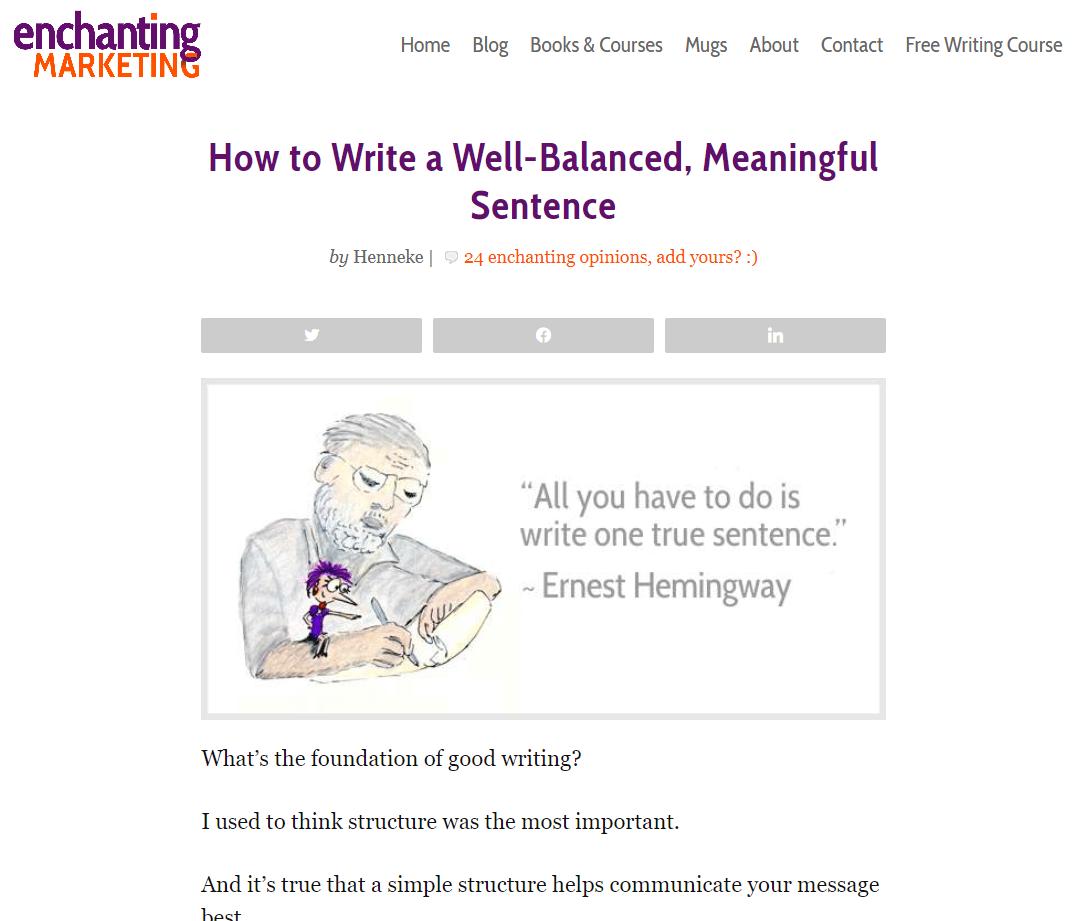
It doesn't feel brief or rushed, however. It's a quick read, but it doesn't lack substance. Instead, it's packed with great examples and writing advice.
Social media posts
Social media posts are short because of constraints the platforms set, but that doesn't mean your posts have to be bland.
Instead, a truly engaging social post tends to include a trifecta of great copy, a striking image, and a relevant link.
Sometimes, all you need to engage people is just a snippet of text and a great photo.
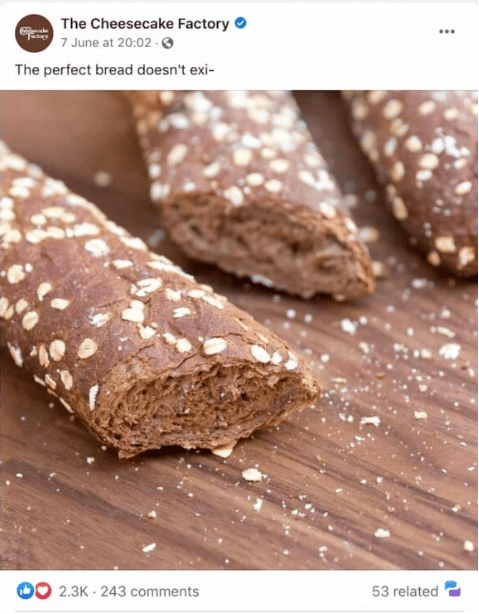
Short videos (TikToks, Reels, YouTube Shorts)
Do short videos spring to mind immediately when you think of short-form content? You're not alone.
The rise of short-form video has coincided with the rise of TikTok, the short video platform that has gained nearly one billion active users in just six years.
TikTok's growth caused other platforms to jump on the video bandwagon, including Reels from Meta, the parent company of Facebook and Instagram, and Shorts from YouTube (which is owned by Google).
Short-form videos can be as brief as a few seconds long, and if they're any longer, they usually stay under the three-minute mark.
Here are some examples from each platform.
TikTok
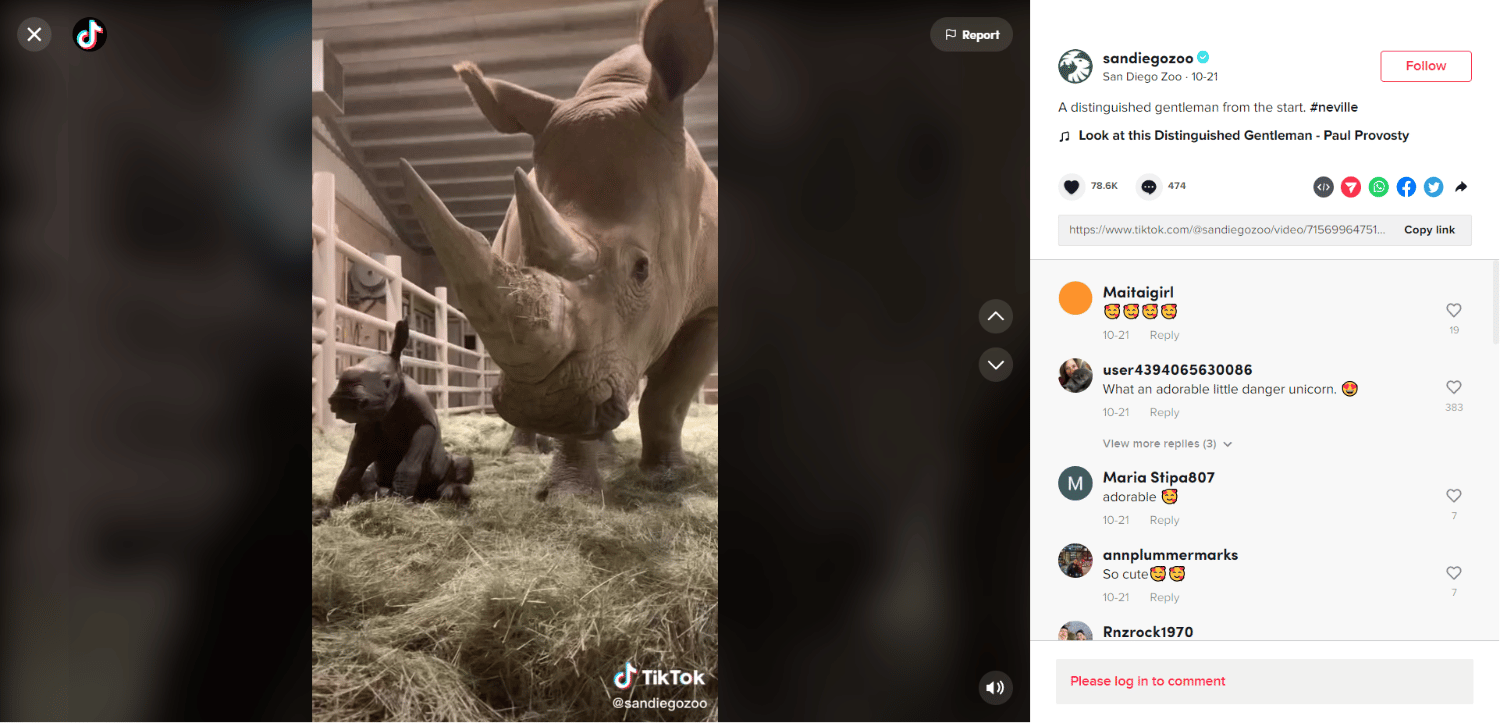
The San Diego Zoo uses its TikTok account to show off the amazing denizens in its care. One cute and funny video of a new baby rhino clocked in at a mere eight seconds but got 78.6K likes and 474 comments.
Instagram & Facebook Reels
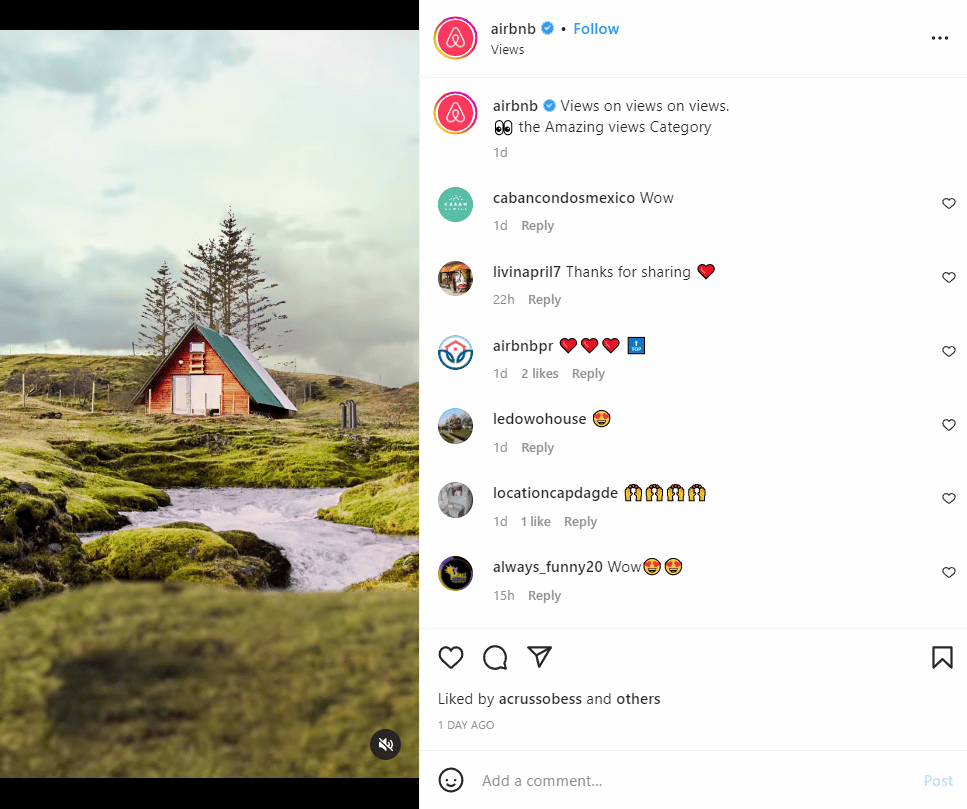
In its Instagram reels, Airbnb shows off the stunning views from its vast array of rentals to great effect. One of the benefits of short videos is how impactful they can be with just a few seconds of footage.
YouTube Shorts
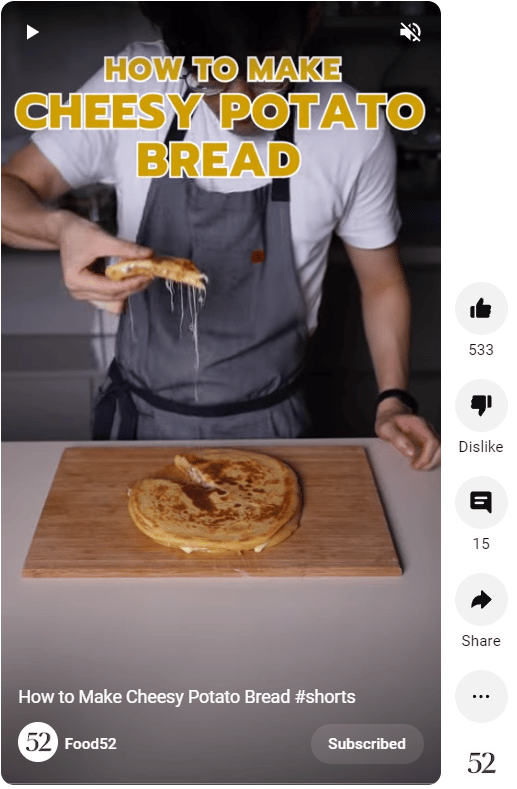
Food52 uses YouTube Shorts to show off quick recipes and cooking tips. They also post Shorts that feature previews of their longer video content.
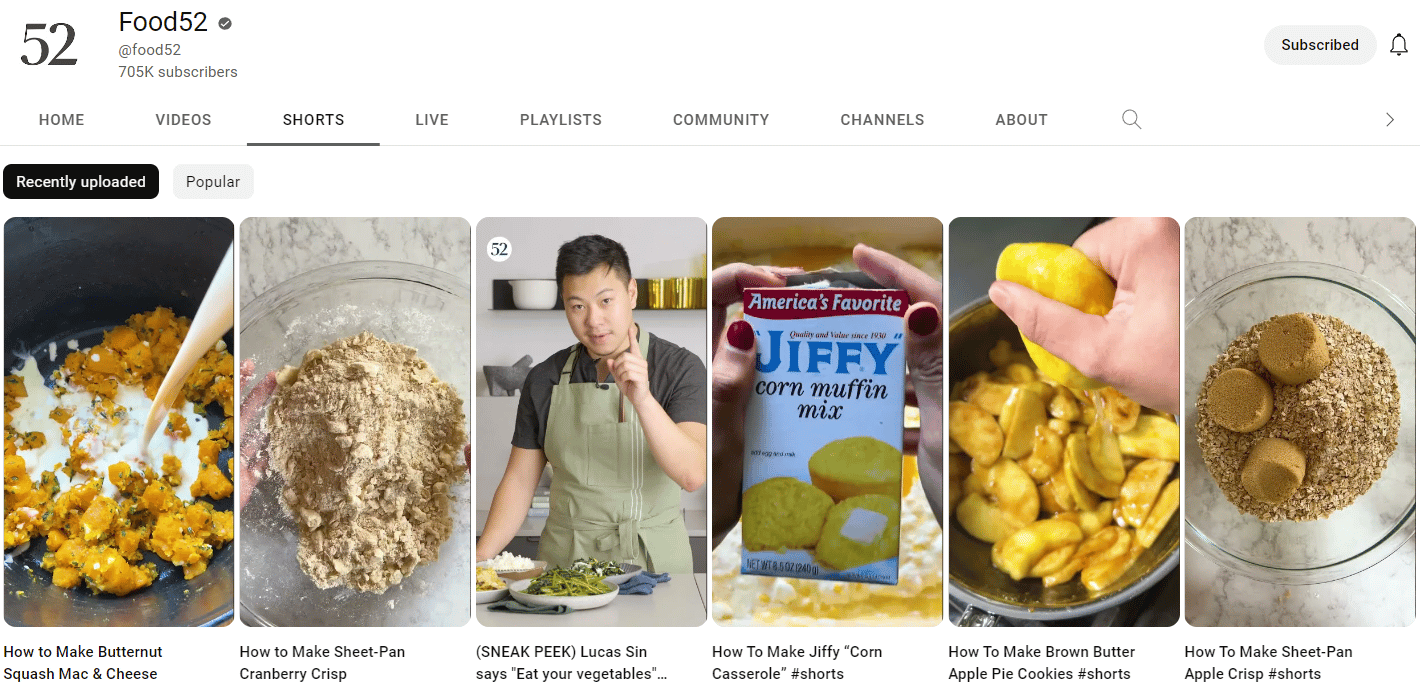
Overall, short videos are an amazing format for brands focused on how-to content.
Best practices for creating short-form content
Short-form content like an Instagram Reel or a short blog post could be a customer's first introduction to your brand. How do you ensure you engage them?
Here are some best practices to follow, including specific tips for short videos.
1. Get to the point and hook them
No matter what kind of short-form content you're creating, you need to get to the point of your post quickly.
Why should your audience care – why should they give you their attention? Tell them immediately, either in your written introduction in a blog post; or with a text overlay, a quick explanation, or a strategic shot in your video.
Getting to the point of your content is essential because the point is also your hook – the element in your content that grabs your audience and doesn't let go.
For example, in the YouTube Short above, "How to Make Cheesy Potato Bread," you'll notice the first few seconds feature the finished product in motion. You see the host slicing the bread and the cheese oozing out.
That's the reason to watch it! Viewers immediately think, “Yum! How do I make it?” – and stick around to find out.
So, give viewers/readers your "why" right away, so they know exactly what the value of the content is upfront.
2. Videos: Pay attention to trends
On short video platforms, hopping on trends is a way to reach more people.
For example, specific songs or sound bytes often become popular and people enjoy putting their own creative twist on them.
In the TikTok of the baby rhino from San Diego Zoo that we mentioned, the clip is set to a sound byte that made the rounds on the platform in various iterations from different users.
One user overlaid the sound byte with footage of his cat, and other users followed suit with their own pets.
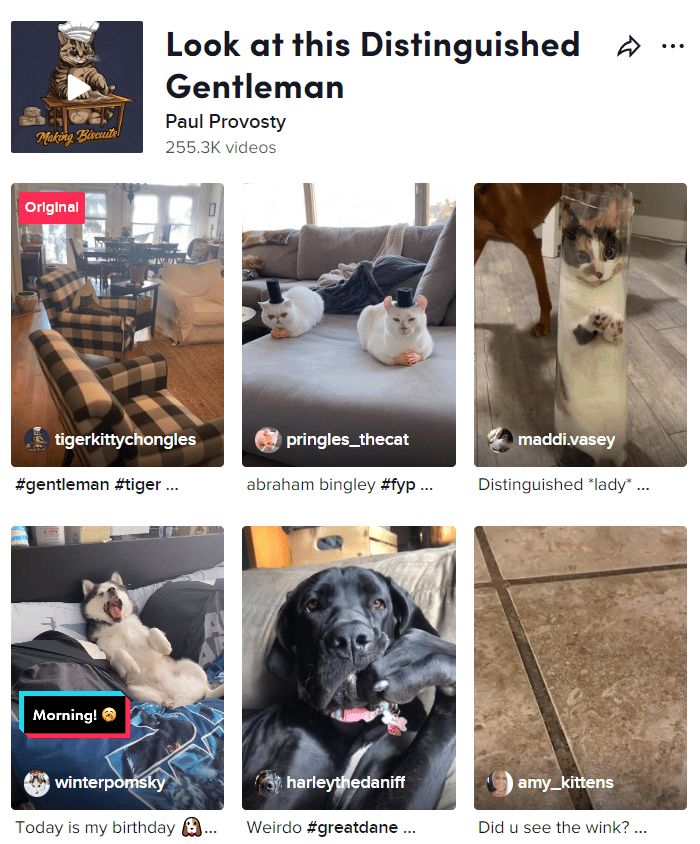
San Diego Zoo hopped on the trend with a totally unique yet relevant entry, which earned them a lot of engagement.
Similarly, pay attention to trends and look for creative ways to use them in your content.
3. Stay relevant to your brand/audience
Whether you're writing a short blog post or creating a short video, whether you're capitalizing on trends or not, always make sure to stay brand- and audience-relevant in the process.
For example, some short video trends will fit seamlessly with your identity, and others will be way off the mark. Don't buy into trends just because they're trendy, but rather determine whether they fit in with your brand identity and audience preferences before you jump on a bandwagon.
For short blogs, keyword and audience research will help you learn whether a topic is relevant and whether addressing it with a short post is the right move.
4. Videos: Worry less about quality
In short-form videos, quality matters less than authenticity, relevance, and value.
Don't worry about producing crisp videos with immaculate shots. Most users want transparency from the brands they like and expect it on social media.
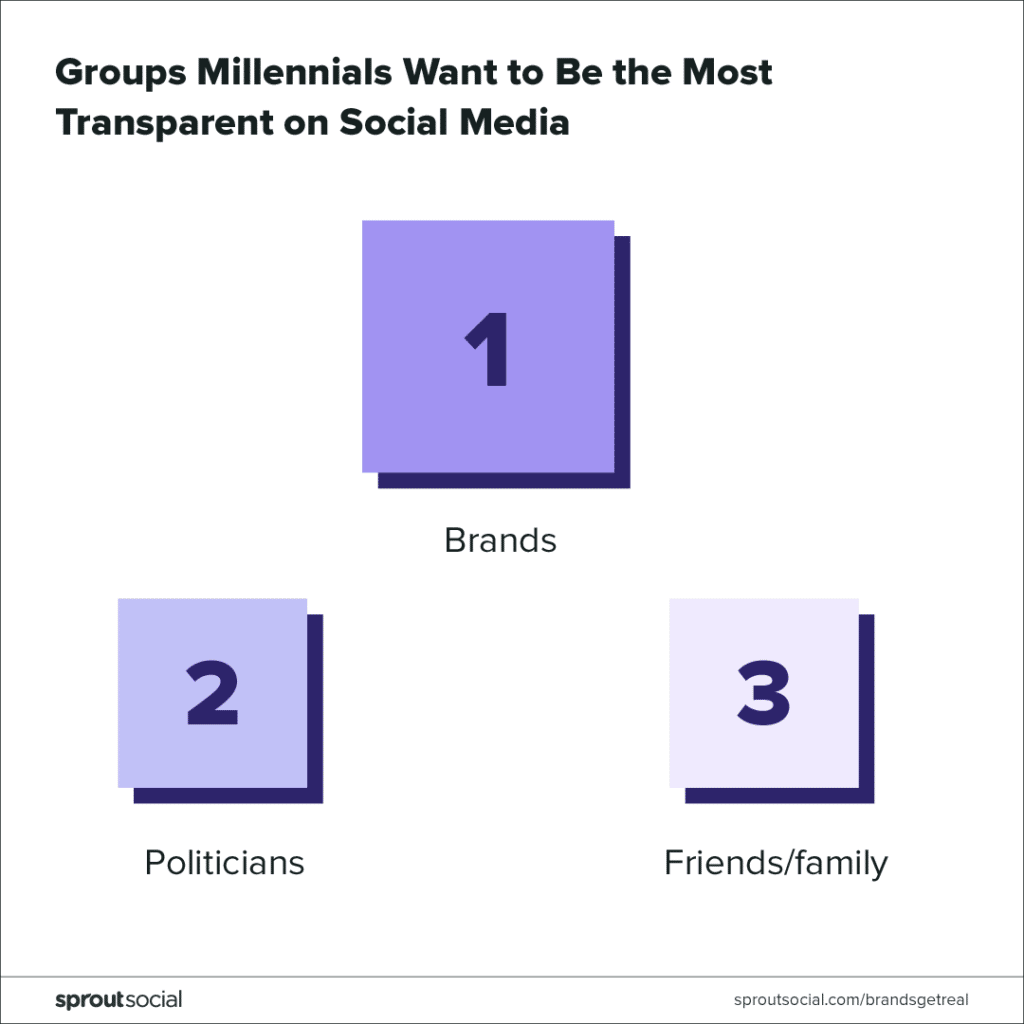
In many cases, greater transparency means showing less gloss and more imperfections.
It means shooting with a shaky smartphone and featuring real people who aren't made up perfectly or going behind the scenes to see the guts of a business, especially if it's messy or imperfect.
5. Focus on value: Entertain, educate, or inform
Above all, no matter the type of short-form content you create, focus on providing value to your audience.
And, by the way, “value” has a lot of meanings. If your content is funny or thought-provoking, it has entertainment value. If it teaches people a relevant concept or skill they're missing, it has educational value. And, if you're sharing important news or information, that content has informational value.
Never publish a short-form piece just to get it out there. Evaluate carefully whether you're sharing something of worth – or whether it will just add to the noise.
Short-form content: A worthy addition to your content strategy
While long-form content holds the top prize for nurturing and converting leads, short-form content has its uses, too.
High-quality short-form content can reach more people, introduce them to your brand, and compel them to engage with you further. Short-form video is especially worthwhile to build brand awareness on social media.
However, the key lies in the mix. You need both short-form and long-form leveraged in different places to get the best results, as each type has a different role to play in your marketing strategy and sales cycle.
Don't overfocus on one at the expense of the other. Rather, use each type strategically for the best results.
The post What is short-form content? Your guide to when and how to use it appeared first on Search Engine Land.
from Search Engine Land https://searchengineland.com/short-form-content-393191
via free Seo Tools